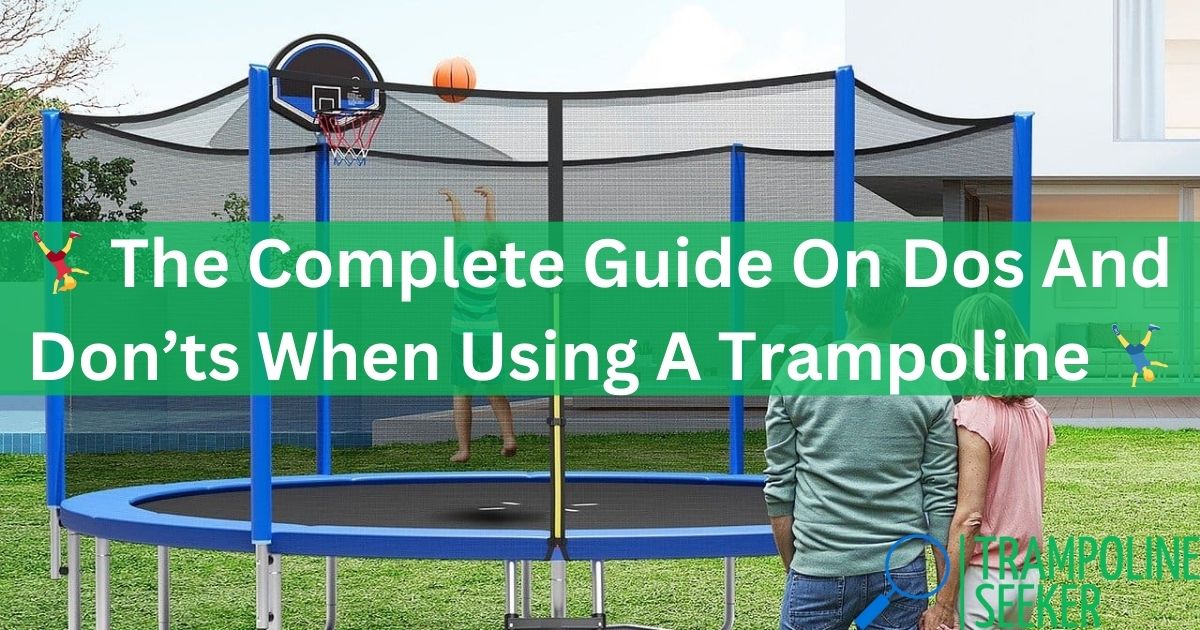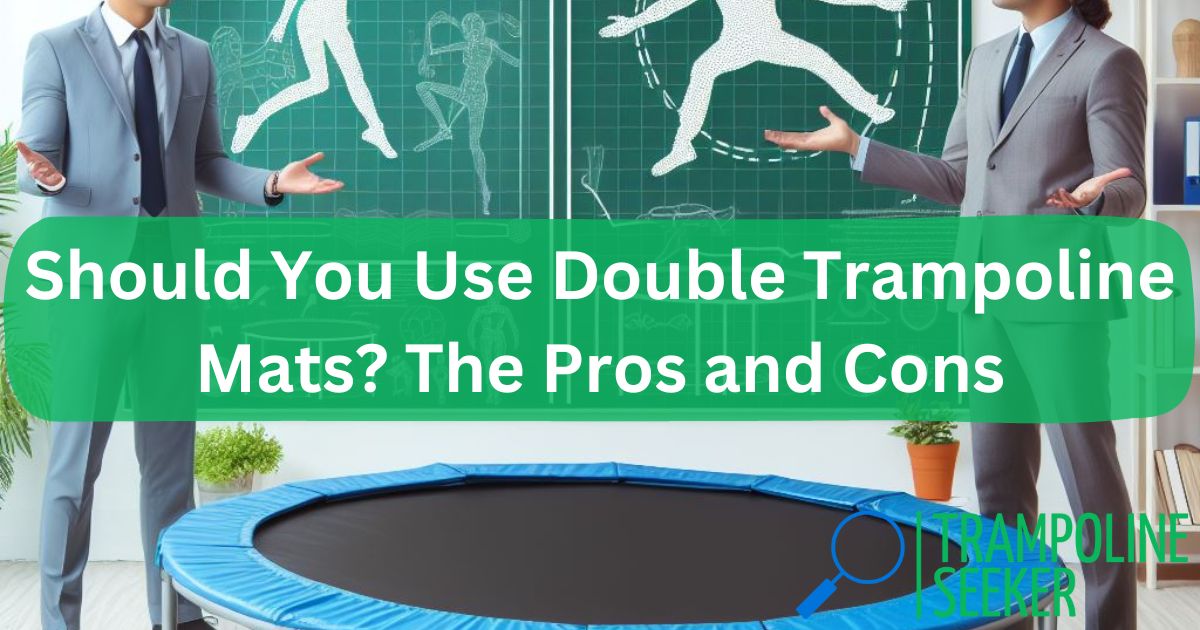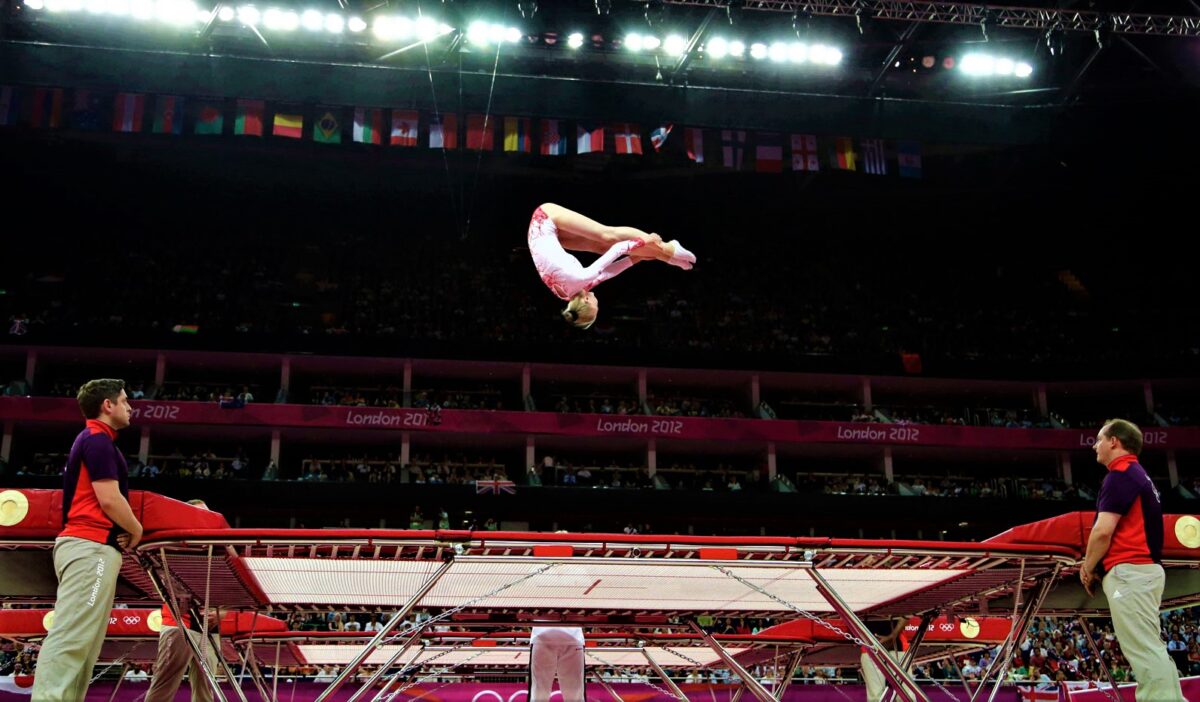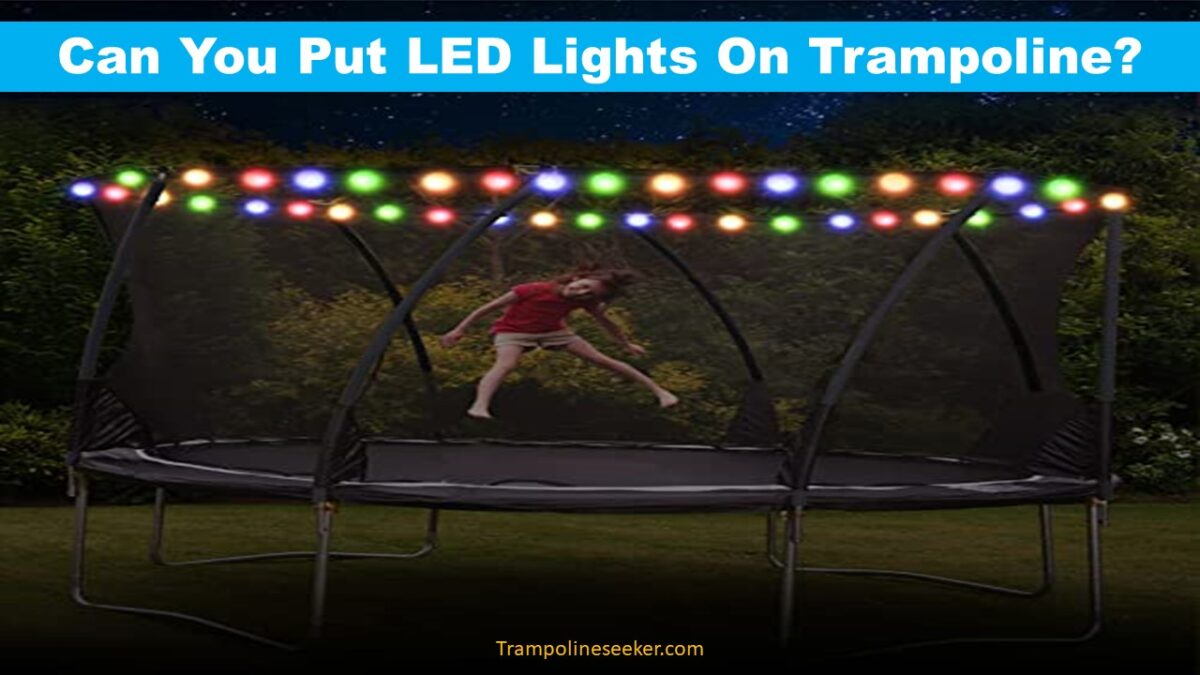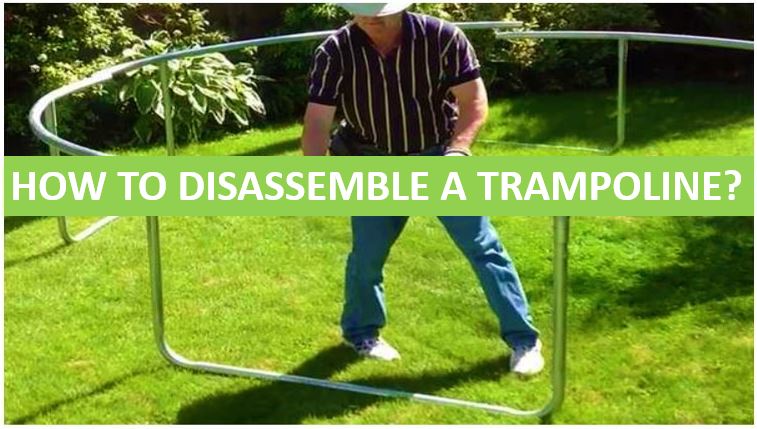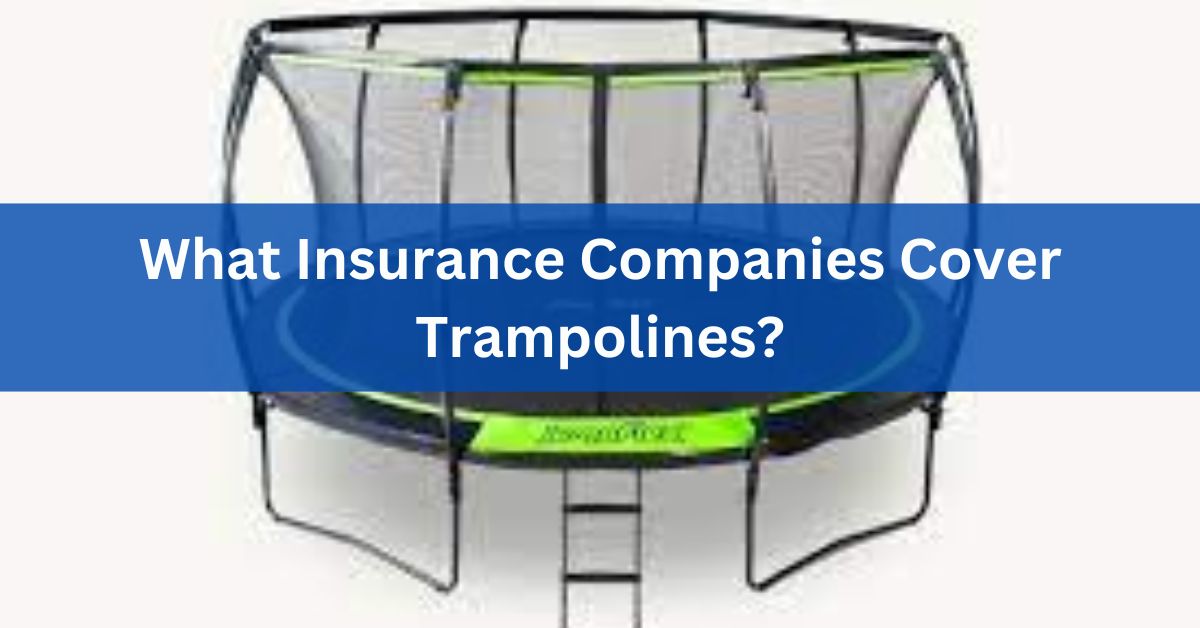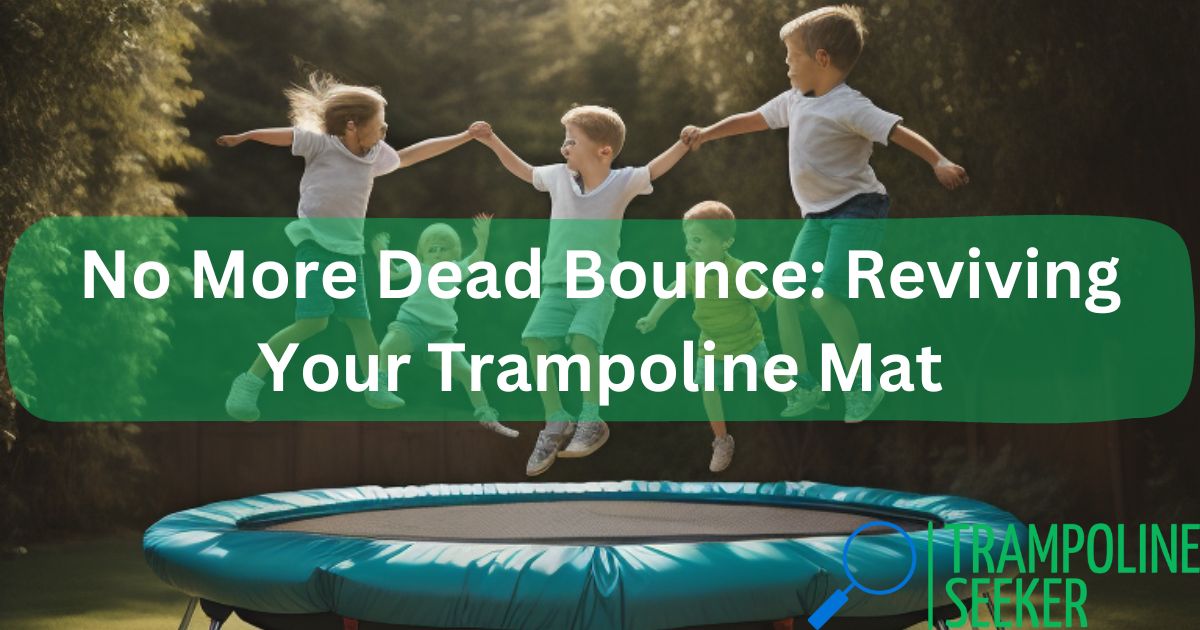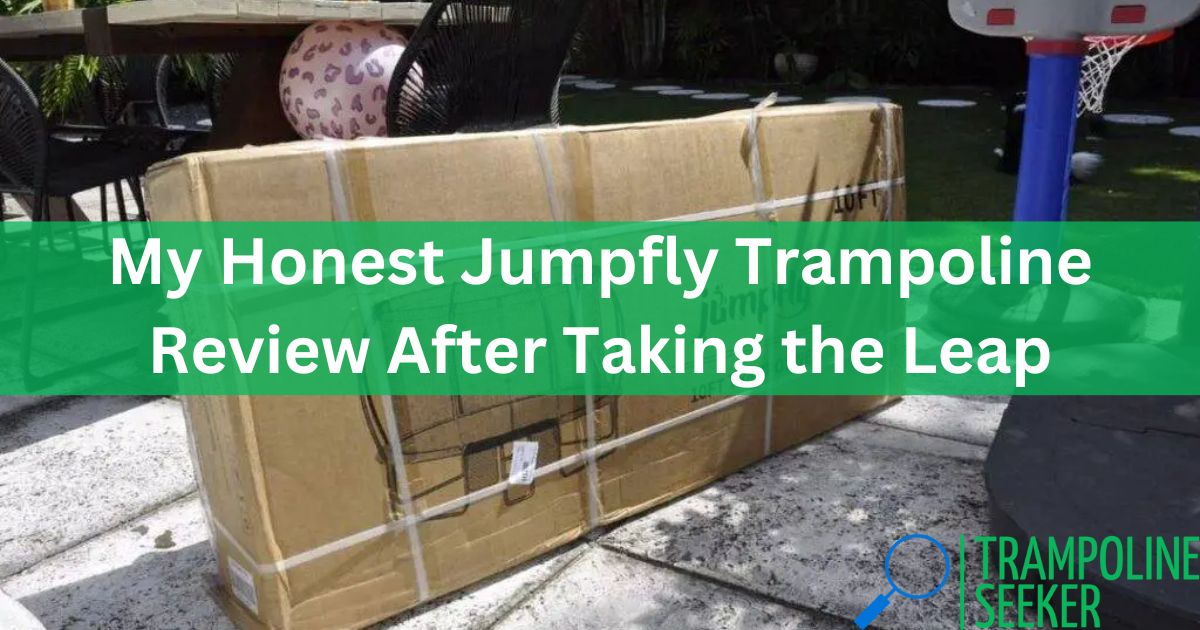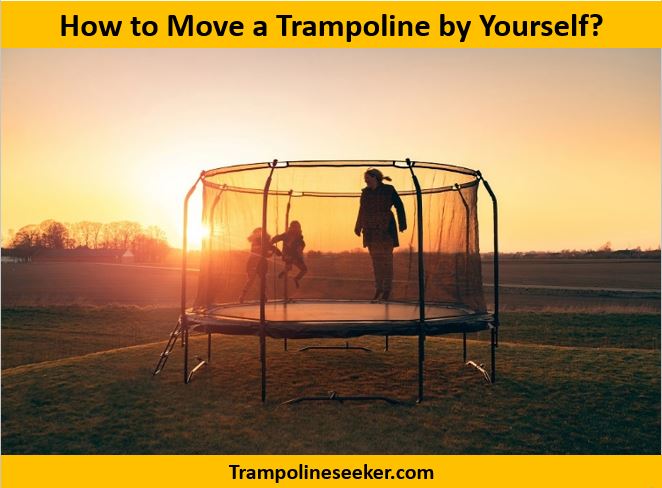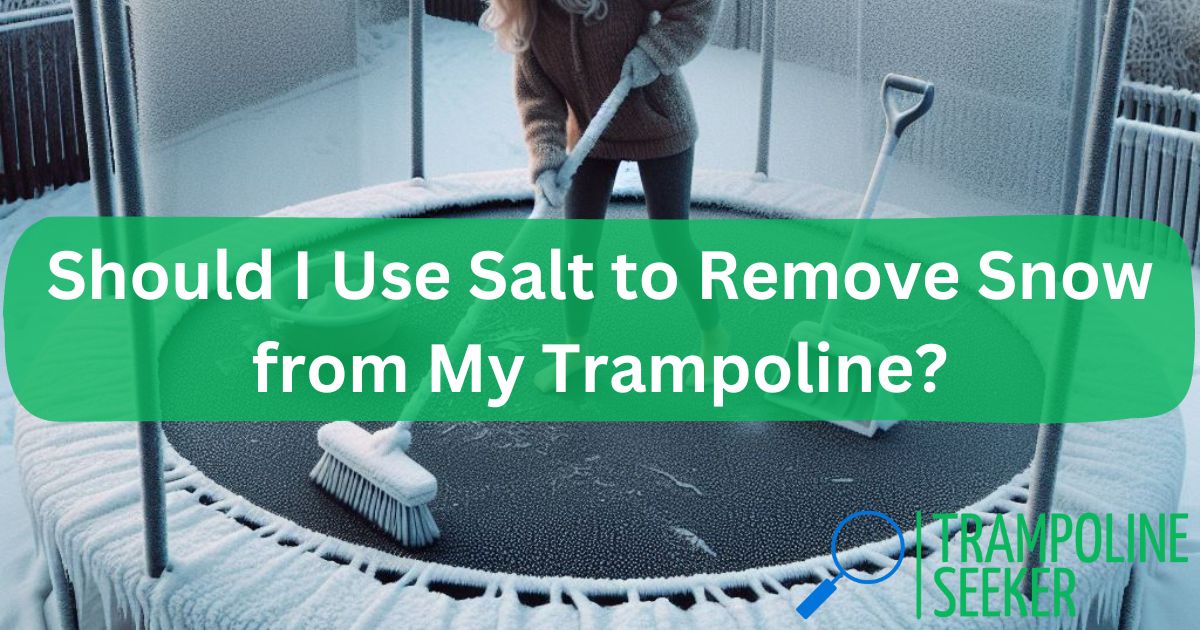I get asked this question a lot by readers and friends: “Is a 12ft trampoline big enough for flips?”
The short answer is yes – for most casual to intermediate flippers, a 12ft trampoline provides ample airtime and space to safely complete frontflips, backflips, and even combo flips. However, more advanced aerialists may want to consider 14ft+ sizes.
In this comprehensive guide, I’ll cover everything you need to know about choosing the right trampoline size for flipping, from beginner basics to expert aerial tricks. Drawing from hands-on testing of top trampoline models and consultation with coaches and athletes, I aim to provide authoritative, trustworthy advice.
Let’s start by looking at key factors that impact a trampoline’s flip-friendliness.
Key Factors That Impact Flip-Ability
When assessing if a certain trampoline size can facilitate flip tricks, there are a few key factors I analyze:
- Jumping Area/Clearance Gap: The greater the unobstructed jumping space, the more room for rotation and landing.
- Lift/Bounce: You need good spring and uplift to achieve height for flips.
- Weight Limit: Make sure the trampoline can handle flipper body weight(s).
- Shape/Orientation: Rectangular and angled setups cater better to tumbling.
- Safety Features: Padding, netting and quality parts help prevent injury.
While most traditional circular trampolines 12ft+ tick those boxes, I’ll go into more detail on ideal flip-focused specs below.
Trampoline Size Recommendations for Flips
Here’s an overview of my top picks for trampoline sizes suited to flip tricks of varying difficulty levels:
Beginner Flips: 10ft – 12ft
Intermediate Flips: 12ft – 14ft
Advanced Flips: 14ft+
I’ll elaborate on the “sweet spot” specs that make each size range well-equipped for their respective flip skill levels.
Best Trampoline Sizes for Beginner Flips (10ft – 12ft)
For casual bouncers looking to master basic frontflips, backflips or combo tricks like the corkscrew, a 10ft – 12ft trampoline offers an approachable starting point.
At this size range, you get enough in-air time and clearance between the mat edge and frame to comfortably tuck and rotate without obstruction. The lift is also conducive to first flip attempts without being overly bouncy.
I’d recommend the following size-specific features for novice flippers:
10ft: Go for high spring count (90+ galvanized springs) for extra bounce.
11ft – 12ft: Prioritize jump space; aim for at least 10ft clearance zones.
Most major consumer brands like Skywalker, JumpKing and UpperBounce make solid 10-12ft models tailored to newbies. I’d also suggest safety accessories like frame padding and external netting to prevent nasty wipeouts while building confidence.
Before moving onto more advanced trickery, flippers should completely master basic frontflips, backflips and combos on these friendly starter sizes.
Must Read: Best 10 Foot Trampoline
Best Trampoline Sizes for Intermediate Flips (12ft – 14ft)
Once elementary flips become second nature, a 12ft – 14ft trampoline gives you room to up the ante on height and rotation with tricky somersault techniques like pike frontflips, suicide backflips and Arabians.
The increased mat width allows gymnasts to fully extend skills with complete vertical rotation. The ample bounce facilitates added height for more complex tricks too like obstacle flips over people or objects.
Key qualities to allow next-level flipping on these intermediate trampolines include:
12ft – 13ft: Look for strong lift capacity (300+ lbs); prioritize mat bounce.
14ft: Focus on maximizing usable jump space for twists/rots.
Many top brands offer heavy-duty 12-14ft models capable of handling sophisticated flipping. I suggest the high-performance JumpSport Elite line or upwardly robust Acon Air trampolines to support advancing skills. Always supervise daredevils attempting risky tricks at this level.
Before progressing further, adolescent and adult flippers should completely nail superior mid-level moves like Arabians and obstacle flips on these intermediate-sized trampolines.
Must Read: Best 12 Foot Trampoline
Best Trampoline Sizes for Advanced Flips (14ft+)
Experienced “boing boing” junkies able to stick advanced front/backhand springs, layouts and indicted flips should size up to 14ft+ mega trampolines to give their soaring skills room to blossom further.
The abundant leap space and forceful, gymnast-caliber bounce of plus-sized models provides consummate conditions to cement elite-grade flipping talents and expand your aerial repertoire.
Standout qualities for maxing out on pro-level tricks include:
14ft+: Prioritize heavy-duty build quality for max bounce; focus on stability.
15ft+: Seek “competition grade” lift quality; watch weight limits closely.
While costly, purpose-built Gymnast trampolines by JumpKing deliver uncompromising quality for honing sport-specific talents. For cheaper but still capable options under mass retailer brands, I suggest the heavy-hitting 16ft JumpPower or Premier trampoline suites.
Before moving onto additional outlandish flips like quintuple back handsprings, even experienced flippers should completely conquer existing tricks on these pro-sized trampolines first.
Must Read:
Ideal Trampoline Shapes and Orientations for Flips
While most household trampolines come in traditional circular builds, specialty rectangular or oval-shaped trampolines can also provide advantages for flip training.
Let’s compare the pros and cons of each design:
Circular Trampolines
Time-tested as reliable recreational bounce pads for all ages, circular trampolines feature even weight distribution and consistent lift across the mat. Models from leading brands like Skywalker, JumpSport and UpperBounce flexmatically facilitate fundamental vertical flip tricks.
Rectangular Trampolines
Featuring lengthwise-oriented bounce beds, rectangular trampolines give gymnasts and tricksters ample runway room to angle attack tricks, sticking tumbling landings more easily. This orientation lends itself better to combo press skills too.
Oval Trampolines
Offering a “best of both worlds” compromise, vertically elongated oval trampolines combine the stabilized center bounce of round builds with some added side-to-side leap latitude for flips.
While the traditional round trampoline works well for most casual training, rectangular or oval-shaped trampolines do provide more specialized mat space for gymnastic tumbling.
Advanced flippers planning sport-specific training should consider these specialty orientation options. However, stability and budget may be sacrificed over traditional trusted round designs.
Safety Considerations for Flips
Before attempting any flip tricks, even on properly sized trampolines, grizzled veterans and eager greenhorns alike should take necessary safety precautions.
Potential hazards from poorly executed aerials range from skin scrapes to broken bones to traumatic head/spinal injuries – underscoring safe prep’s importance.
Here are my top tips for promoting safe flipping conditions:
- Inspect Equipment – Check for defects; ensure appropriate weight limits.
- Allow Adequate Clearance – Mind obstacles; anchor trampoline.
- Control Access – No unsupervised use; one flipper at a time.
- Employ Spotters – Enlist trained assistants for risky tricks.
- Use Safety Gear – Install frame pads, nets and harnesses as needed.
- Learn Proper Form – Get training from qualified coaches.
- Assess Ability Level – Attempting over-advanced tricks heightens injury chances.
- Maintain Conditioning – Prep muscles and practice regularly.
While thrilling, advanced aerial maneuvers require assuming real physical risks. Trampoline flippers must balance personal safety and skill cultivation.
Related: Is a 10ft Trampoline Big Enough for a Teenager?
FAQs: Common Trampoline Flip Questions
I’ll finish off by answering some of the most frequently asked trampoline flip questions I encounter:
What is the easiest flip trick to learn on a trampoline?
For beginners, basic vertical frontflips and backflips are by far the easiest intro flip tricks to pick up. They form the core rotation skills underpinning more advanced tricks too.
What size trampoline is best for gymnasts?
Elite gymnasts require advanced “competition grade” trampolines meeting FIG specs (approximately 5m x 3m) with specialized ultrabounce beds. For hobbyists, a 14ft consumer trampoline provides ample trick training versatility.
Can you land on your neck doing a flip?
Yes, failed flip trick attempts can potentially lead to catastrophic neck/spine injury if not corrected mid-flight. Always stop tricks gone wrong by aborting rotation early and landing on butt/back rather than dangerously “crunching” a sloppy front rotation landing. Proper supervision and skill progressions prevent most bad landings.
Can adults flip on trampolines?
Absolutely! However, adults should confirm the dynamic weight rating safely supports their mass. Frame pads, nets and covered springs also help facilitate safer bouncing and skill building for mature jumpers.
What’s better for flips: round or rectangular trampoline?
Rectangular trampolines provide more usable length for tumbling skill build-up. However round trampolines tend to facilitate better overall stability and lift. Choose shape based on priority trick type.
Conclusion
So to recap and solidify consensus on the initial question: Can 12ft trampolines accommodate flip tricks? The answer is a definite yes for rookies and a “maybe” for experts – erring larger as skills progress to be safe.
While mastering basics, 12ft provides ample airtime to incrementally dial rotations. But hardcore aerialists may eventually require maximized mat space of 14ft+ trampolines to stick advanced technique landings.
Remember to always carefully match trick choice and trampoline type to personal capability. And never neglect safety steps even with ideal gear. Prioritizing progression over perfroduction is key to responsible, sustainable trampoline trick mastery.
Thanks for tuning into my complete guide to sizing trampolines for flips. Whatever your aerial aspirations, may you find this info useful for achieving bouncing success! Please drop me any lingering questions in the comments section.
Articles You May Like to Read:


